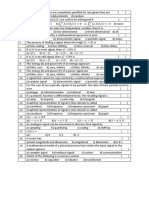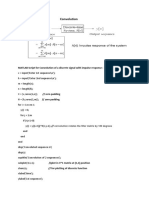0% found this document useful (0 votes)
196 views2 pagesAnalog and Digital Signals
Analog signals represent information as continuous waves and are used to express quantities that vary over time, such as in electrical, mechanical, and hydraulic processes. Digital signals represent information numerically using discrete values and are more reliable for transferring data in computer technology. The main differences are:
- Analog signals use small fluctuations to pass information while digital signals use numeric methods.
- Digital signals can change audio/visual parameters but analog can only record in the original form.
- Analog signals have easier processing but digital signals can travel faster and transfer more data over long distances.
Uploaded by
Abdullah RamayCopyright
© © All Rights Reserved
We take content rights seriously. If you suspect this is your content, claim it here.
Available Formats
Download as PDF, TXT or read online on Scribd
0% found this document useful (0 votes)
196 views2 pagesAnalog and Digital Signals
Analog signals represent information as continuous waves and are used to express quantities that vary over time, such as in electrical, mechanical, and hydraulic processes. Digital signals represent information numerically using discrete values and are more reliable for transferring data in computer technology. The main differences are:
- Analog signals use small fluctuations to pass information while digital signals use numeric methods.
- Digital signals can change audio/visual parameters but analog can only record in the original form.
- Analog signals have easier processing but digital signals can travel faster and transfer more data over long distances.
Uploaded by
Abdullah RamayCopyright
© © All Rights Reserved
We take content rights seriously. If you suspect this is your content, claim it here.
Available Formats
Download as PDF, TXT or read online on Scribd
/ 2






























































































